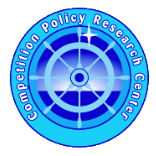CPDP-
49-E(PDF:247KB) |
"The Effects of Non-assertion of Patents Provisions -R&D Incentives in Vertical Relationships." (2011.4)
Noriaki Matsushima (Associate Professor, Institute of Social and Economic Research Osaka University)
Koki Arai(JFTC, Head of CPRC Secretariat)
Ikuo Ishibashi(Osaka School of International Public Policy)
Fumio Sensui(Professor, Graduate School of Law,Kobe University)
Using a simple downstream duopoly model with vertical relations and downstream R&D, we investigate the effect of non-assertion of patents (NAP) provisions. A monopoly upstream firm decides whether to employ NAP provisions. If it does so, it freely incorporates the R&D outcomes into its inputs. Incorporation improves the efficiency of the downstream firms’ production. We have interpreted the introduction of NAP provisions as a source of technology spillover. Using the technologies of two downstream firms is optimal for the upstream firm if and only if the degree of technology spillover is small. In addition, if the ex ante cost difference between the downstream firms is significant, such technology spillovers erode both the profit of the efficient downstream firm and social welfare. We interpret our result in the context of an actual antitrust case related to this model.
Keywords:vertical relations, investment, technology spillover, NAP provisions
JEL classification codes: K43, L11 |
